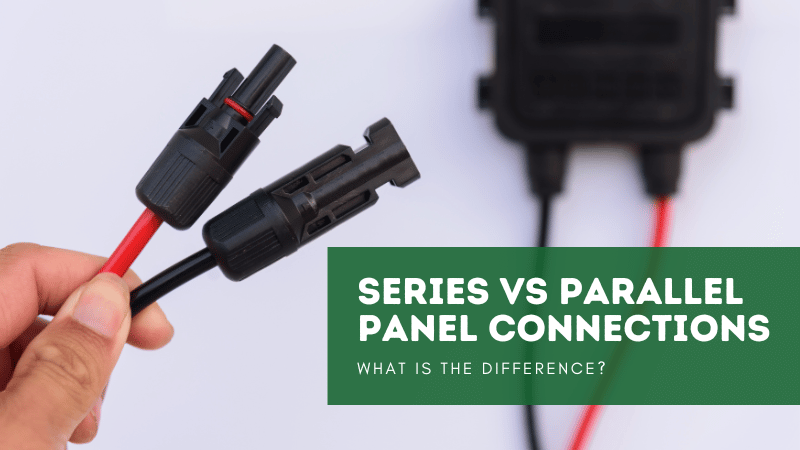Understanding Series and Parallel Solar Panel Connections
In this instructional video, we explore how to connect solar panels in series and parallel configurations. Understanding these setups is crucial for designing an optimal solar energy system.
Series Connections: Increasing Voltage
When connecting panels in series, the total voltage increases while the amperage remains unchanged. For example, connecting two 550W solar panels, each with a voltage of 50V and an amperage of 15A, results in a combined voltage of 100V, with the amperage steady at 15A.
Parallel Connections: Increasing Amperage
On the other hand, in a parallel connection, the voltage remains constant, but the amperage accumulates. Using the same panels in parallel maintains the voltage at 50V, but increases the amperage to 30A.
Wattage Considerations and System Compatibility
It’s essential to note that while these configurations alter voltage and amperage, the total wattage output remains the same. Whether in series or parallel, the panels’ total power capacity does not change. However, choosing between series and parallel connections depends on the input parameters of your solar charge controller (MPPT), solar pump controller, or inverter combo. Always read the manual, plan accordingly, and test with a multimeter (set to DC) before connecting.
Configuring Solar Panels for Your System
Each solar controller or charger has specific voltage and amperage limitations. Configuring your panels within these parameters is crucial to avoid damaging your equipment. For instance, a series configuration may suit controllers that handle higher voltages, while a parallel setup might be better for systems where higher amperage is needed, but voltage limits are lower.
Advanced Solar Installations: Strings and Parallel Connections
In more advanced solar installations, you can create “strings” of panels by connecting several panels in series. This setup increases the voltage while maintaining a consistent amperage across the string. For example, a string of four solar panels, each rated at 50V and 15A, would produce 200V while maintaining 15A.
Once these strings are formed, they can be connected in parallel with other strings that have an identical number of panels connected in series. This method allows you to combine amperage while keeping the voltage constant across the system. For instance, connecting two such strings in parallel would maintain the 200V voltage level while increasing the amperage to 30A.
This approach offers flexibility and optimization in solar installations, helping you balance the system’s total voltage and amperage to match your solar controller or inverter’s specifications. By adjusting the number of panels per string and the number of strings in parallel, you can effectively manage the solar array’s electrical characteristics to ensure operational efficiency and component safety.
Measuring and Testing Solar Panel Connections
During the tutorial, we also cover open-circuit voltage measurement using standard entry-level multimeters capable of measuring DC voltage. Outdoor testing demonstrates how voltage varies or remains constant based on the connection type. The key takeaway is the importance of understanding and respecting your solar energy system’s operational parameters to ensure safe, efficient, and effective use of solar technology.
Watch the full tutorial here: https://www.youtube.com/watch?v=0Bx7_qNcCd8

